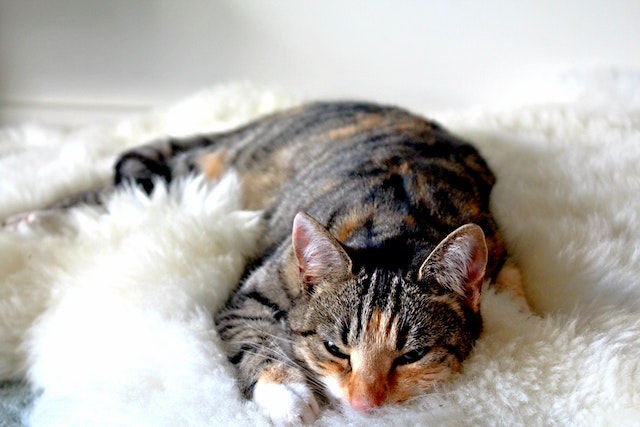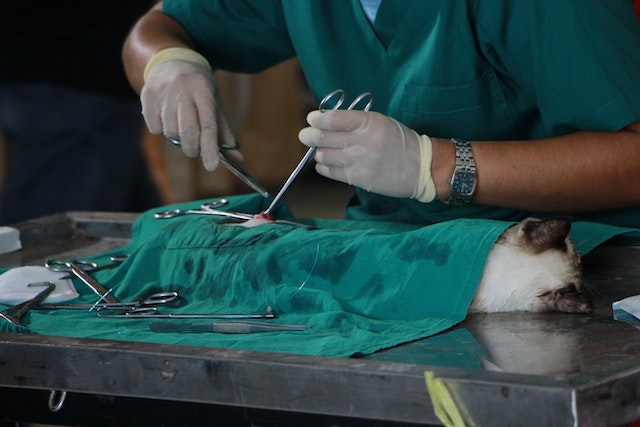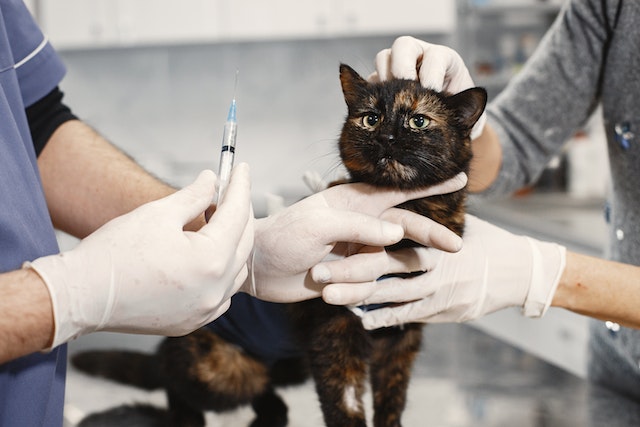Can cats get breast cancer? Just like mammals, particularly women, cats also get breast cancer. Breast cancer is common in male and female cats but is more common in females between ten to twelve years.
However, if breast cancer in cats is detected at an early stage, it can be treated, although there are high chances of recurrence. Unfortunately, 30% to 40% of cats are affected by breast cancer. In this article, we will learn all about mammary tumors in cats.
So, let’s dive in!
So, What is Mammary Tumor, and What Causes It?

Mammary tumor, otherwise known as breast cancer, develops due to the reproduction of cells that make the breast tissue. These mammary tumors can either be cancerous or non-cancerous. Unfortunately, in cats, 90% of mammary tumors are cancerous.
What causes the development of mammary tumors in cats has never been fully understood. Although exposure to female reproductive hormones, such as progesterone and estrogen, can increase the risk of getting mammary tumors in cats.
However, there is a hypothesis that says exposure to these hormones makes the mammary gland cells enlarge to a pre-cancerous state, and then it transforms into carcinoma. One cause of this cancer is whether a cat is spayed or sexually intact.
Sexually intact cats have seven times more risk of getting mammary tumors than spayed cats.
It is also said that early spaying prevents the development of mammary tumors. Another cause of mammary tumors is the age and breed of the cat. Cats around 10-12 years have a higher risk of getting this cancer.
Persian and Siamese cats have higher risks of getting mammary tumors at an early age. In addition, obese cats are at a higher risk of developing this cancer than skinny cats.
Types of Mammary Tumors in Cats
1. Carcinomas Mammary Tumor
Carcinoma is also known as adenocarcinoma. It is the most common mammary tumor in cats and starts to develop in the mammary tissue.
2. Inflammatory Carcinoma
This is the most aggressive type of mammary tumor in cats. It is identified by a lamp in a cat’s belly and is usually hot or warm when you touch it. This cancer can also spread to the surrounding skin, and the area is usually red.
3. Benign Mammary Gland Adenoma
This type of mammary tumor originates from the epithelial tissue, which are the cells that form linings in the body. In cats, a benign tumor is only 5%.
4. Carcinosarcoma Mammary Tumor
This mammary tumor begins in the connective tissue or bones, the most malignant mammary tumor.
Signs of Mammary Tumors in Cats
- Swelling or lump along the mammary chain. The mammary chain is the line of nipples and breast tissues in your cat’s belly.
- Enlarged lymph nodes in the axillary region behind and under the front legs or lymph nodes in the groin.
- Rapid or shallow breathing if the mammary tumor has to the lungs.
- Loss of weight
- Loss of appetite.
Treatment of Breast Cancer in Cats
1. Surgery

Surgery remains to be the best treatment for mammary tumors in cats. However, the type of surgery will depend on whether there is a single or several masses present. A single-chain mastectomy can be performed, which entails removing one side of the breast tissue.
Additionally, a double-chain mastectomy can also be performed, which involves the removal of both breast tissue.
2. Chemotherapy
Chemotherapy usually comes after the surgery. Chemotherapy becomes necessary, especially if the tumor has spread, ulcerated, or if the cancer is very aggressive. Chemotherapy also helps to fight the lingering cancer cells to reduce the chances of cancer recurrence.
Chemotherapy is often intravenous, but there are options for oral versions. Cats are good with chemotherapy after the surgery; less than 5% experience the severe side effects of chemotherapy.
Some side effects of chemotherapy include diarrhea, nausea, tiredness, and stomach upset.
3. Radiation
Radiation is also used to fight the remaining cancerous cells after surgery to reduce the risks of cancer recurrence. Although radiation is not used to treat breast cancer in cats, it is applicable in rare circumstances.
There are two types of radiation treatment which include Stereotactic radiation and (CFRT) conventional fractionated radiation therapy. Stereotactic radiation involves two treatments, while CFRT involves 16-18 treatments.
4. Drugs

Cats with feline mammary tumors are often treated with other drugs, such as estrogen antagonist drugs and non-steroidal anti-inflammatory drugs.
Final Words
Can cats get breast cancer? Yes, they can. Although you cannot prevent cancer, you can identify it at its early stages by inspecting your cat’s under areas like the nipples and mammary glands to see if there are any developing tumors.
Luckily, with proper treatment, your cat can return to a cancer-free state and live a healthy life. Although there are chances of cancer occurring after the treatment, you will still get to enjoy your little feline friend.








